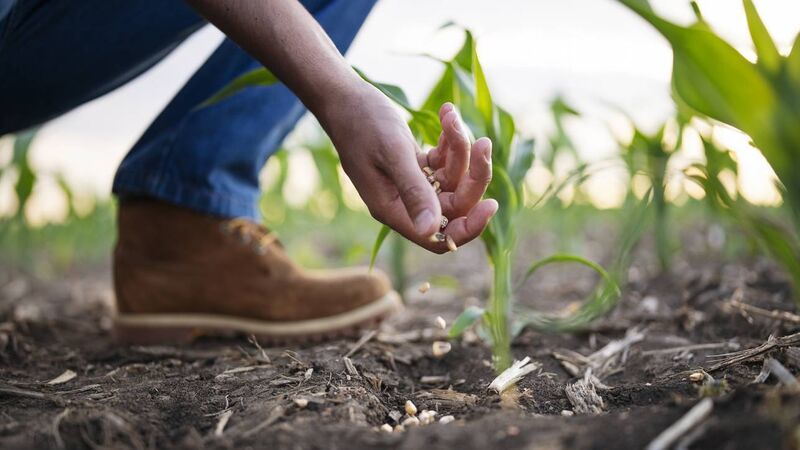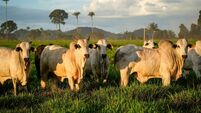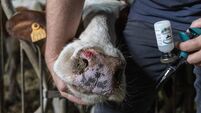Brian Reidy: As winter '22 ends, don't forget to plan for next winter's feed

At this time of year, we must begin to review plans for what crops to produce for the coming season, writes ruminant nutritionist Brian Reidy.
While we have had a great spell of weather recently and many have had an opportunity to get slurry out, it’s still only the start of February and it’s likely that the winter is not over just yet.
There is a fodder shortage brewing in some farms and there is a reasonable amount of silage being traded. This silage is of variable quality and costing big money.
In the vast majority of cases, it would be easier work and more cost-effective to stretch existing stocks of silage with meal and straw. How you go about preventing this from happening next year is what you must control over the coming months.
Plenty of jobs are on the 'to-do' list, as is generally the case in a busy yard during February. As I mentioned above, we must take every opportunity to get slurry out while conditions are good.
Even on heavier ground, umbilical systems have worked well to minimise damage. Getting into fields to do other jobs is also possible right now, which is ideal as fencing and hedge cutting still need to be sorted before turning stock out on some farms. Some have also put out some fertiliser to liven up the swards.
At this time of year, we must begin to review plans for what crops to produce for the coming season. I have constructed a few feed budgets already this year for the next 14 to 16 months feeding.
After last year when most experienced varied quality and yields in all crops, many beef and dairy producers are reassessing their options for feeding next winter. Grass silage is getting more expensive year and alternatives must now be explored by all livestock producers.
While looking forward, we should make sure that we have accurate data and analysis about the previous year’s forage production.
Many are lamenting the average crops of grass silage saved in 2022. Maize silage was excellent last year and with the knowledge in agronomy and the reliability of varieties, it has become a very reliable crop for Irish livestock producers.
Maize has tested really well with excellent dry matter and starch. It really boils down to growing maize in the right site, using the right varieties, growing it under film were appropriate and applying the required nutrients to the crop.
In conversations I have had with customers recently, many are considering increasing their acreage for 2023 as they have realised that it is so much cheaper per 1000 UFL to produce versus a two-cut silage system.
One unit of nitrogen will grow twice as much energy when used to grow maize silage than if it is used to produce grass silage. This has become even more of an issue as we see land rental head over the €500 per acre mark in many cases.
Two cuts of silage will yield 3.5 tonnes dry matter per acre, while a single cut of maize will yield close to seven tonnes dry matter per acre.
Then if a contractor charges €170/acre for first-cut with two tonnes of dry matter, that’s €85/tonne of dry matter. While if they charge €210 per acre to harvest maize, then that’s €30/tonne dry matter.
Also to be considered, is that good quality grass silage is becoming illusive for many due to weather and other constraints, such as cutting crops from old pastures and rented ground.
The addition of a second forage source along with grass silage to a dairy or beef finisher diet can increase forage Dry Matter intake by between 10% and 15%, which can significantly reduce production costs as this will result in reduced concentrate inputs being required.
Non-grass forages have a huge role in dairy and beef production in Ireland, as they are generally far more reliable sources of high-quality energy for stock in comparison with the extremely variable grass silages produced here yearly.
A viable option for some farmers who do not have suitable land to grow alternative forages may be to source them locally from specialised tillage producers.
This will also come into play for farms in derogation that must adhere to the 80% grass rules.
Do your sums based on the cost per 1000 UFLs of energy and the cost per tonne of dry matter of each forage before any decision is made. Renting ground for silage is often not cheap relative to buying forage at harvest.
If you are serious about producing quality grass silage, you must have a plan in place to produce it.
This plan should include an early grazing strategy or having grazed silage ground late last year, a soil nutrient test, a fertiliser & slurry programme, a weed control programme, a reseeding programme, a planned early cutting date (late April/early May in southern counties) and a good ensiling strategy.
How many of us can honestly say that we have all of those boxes ticked? This is the time of year to set out your goals for all of the above aspects.
Those producing quality silage in 2023 will be cutting it early and will have the first application of fertiliser out in the next three to four weeks or so, weather permitting.
- Brian Reidy is an independent ruminant nutritionist at Premier Farm Nutrition.










